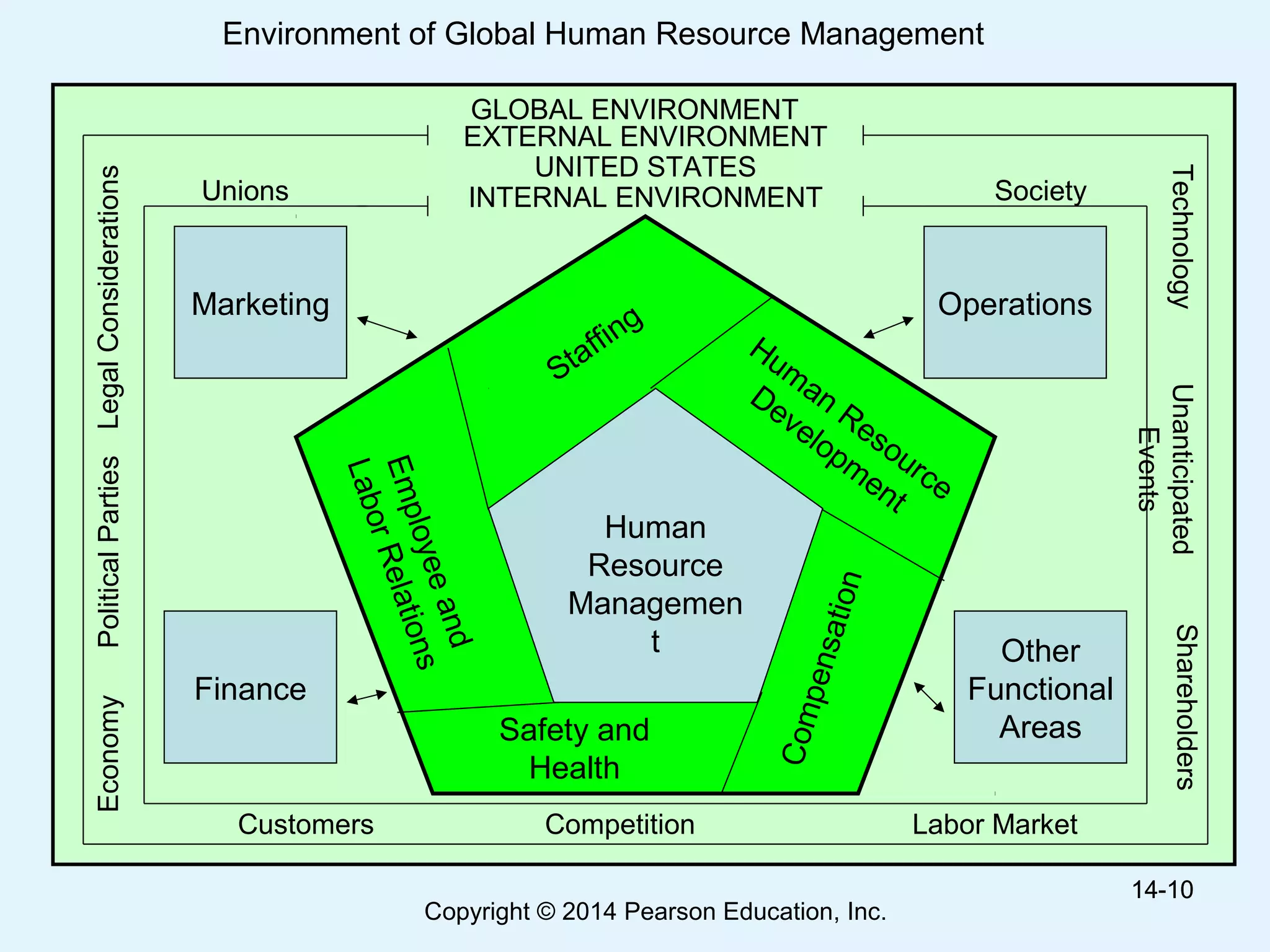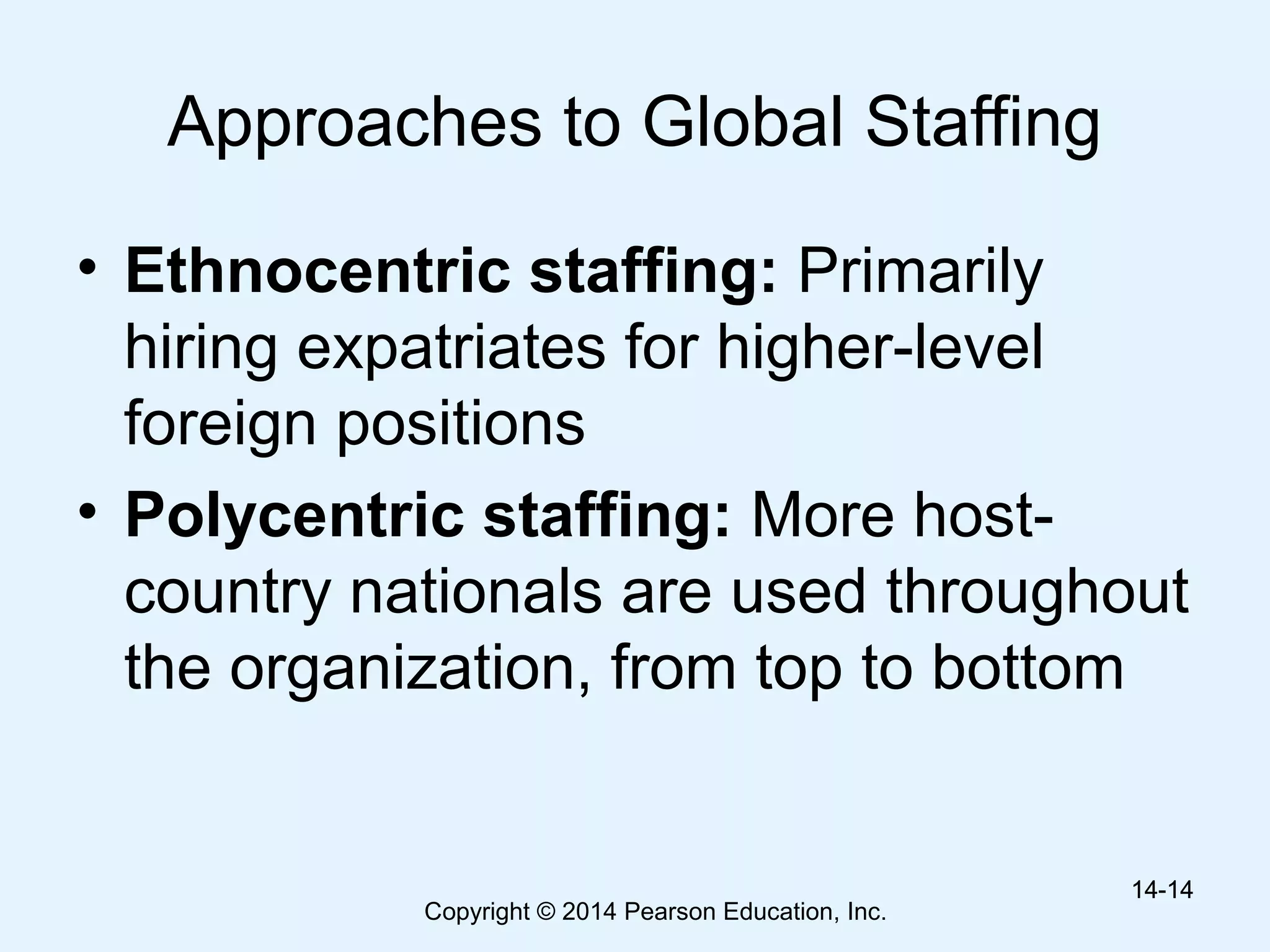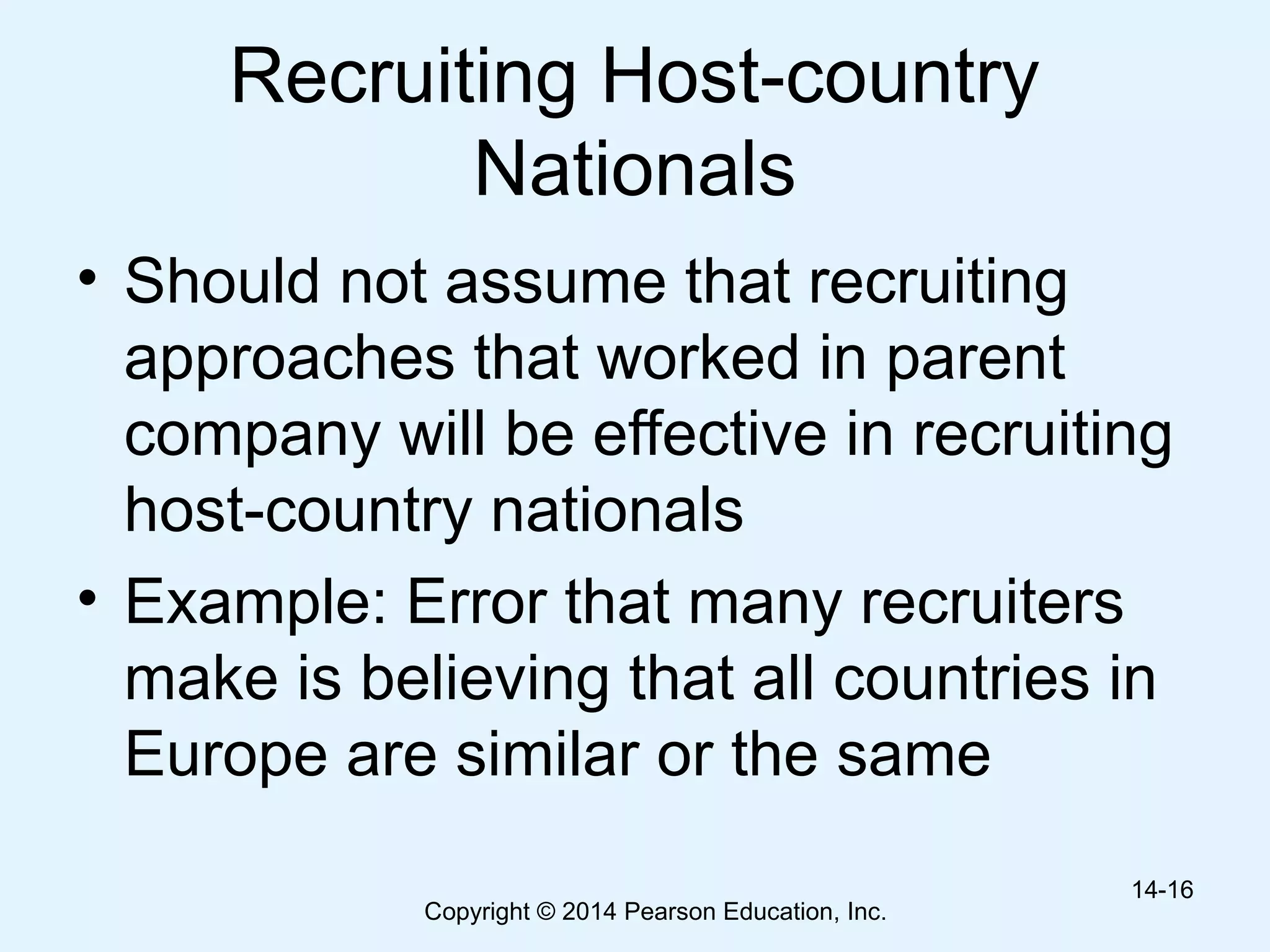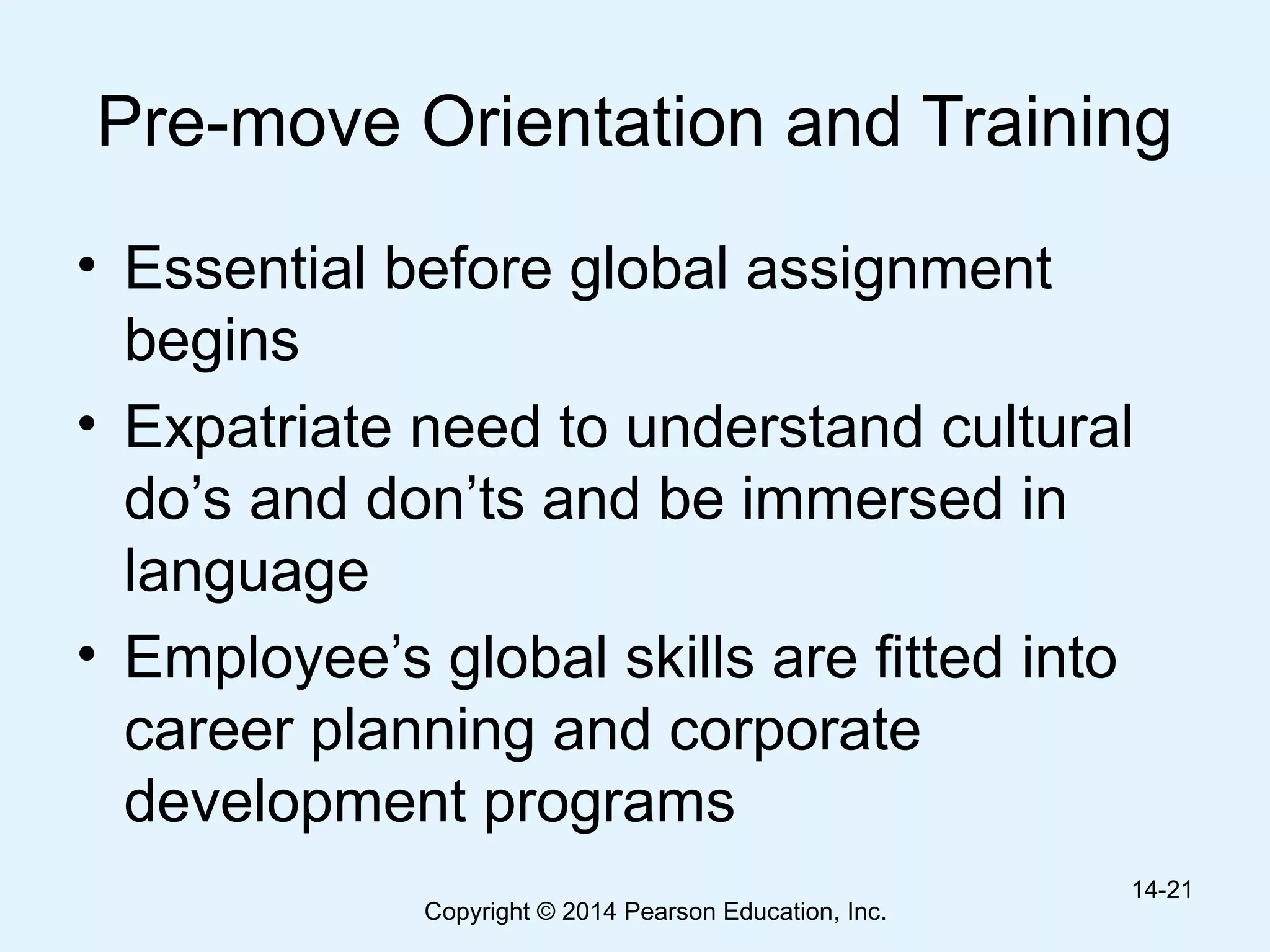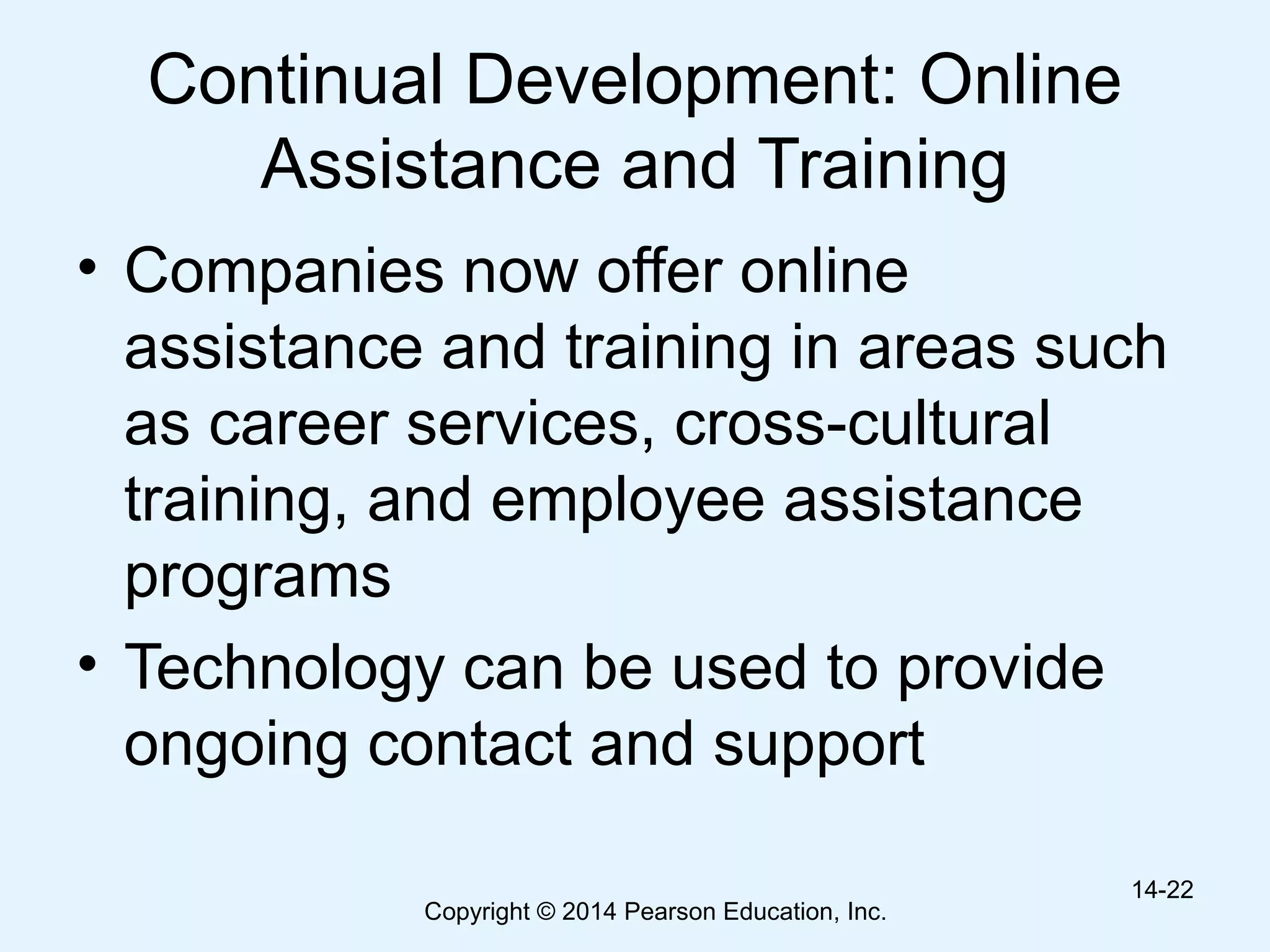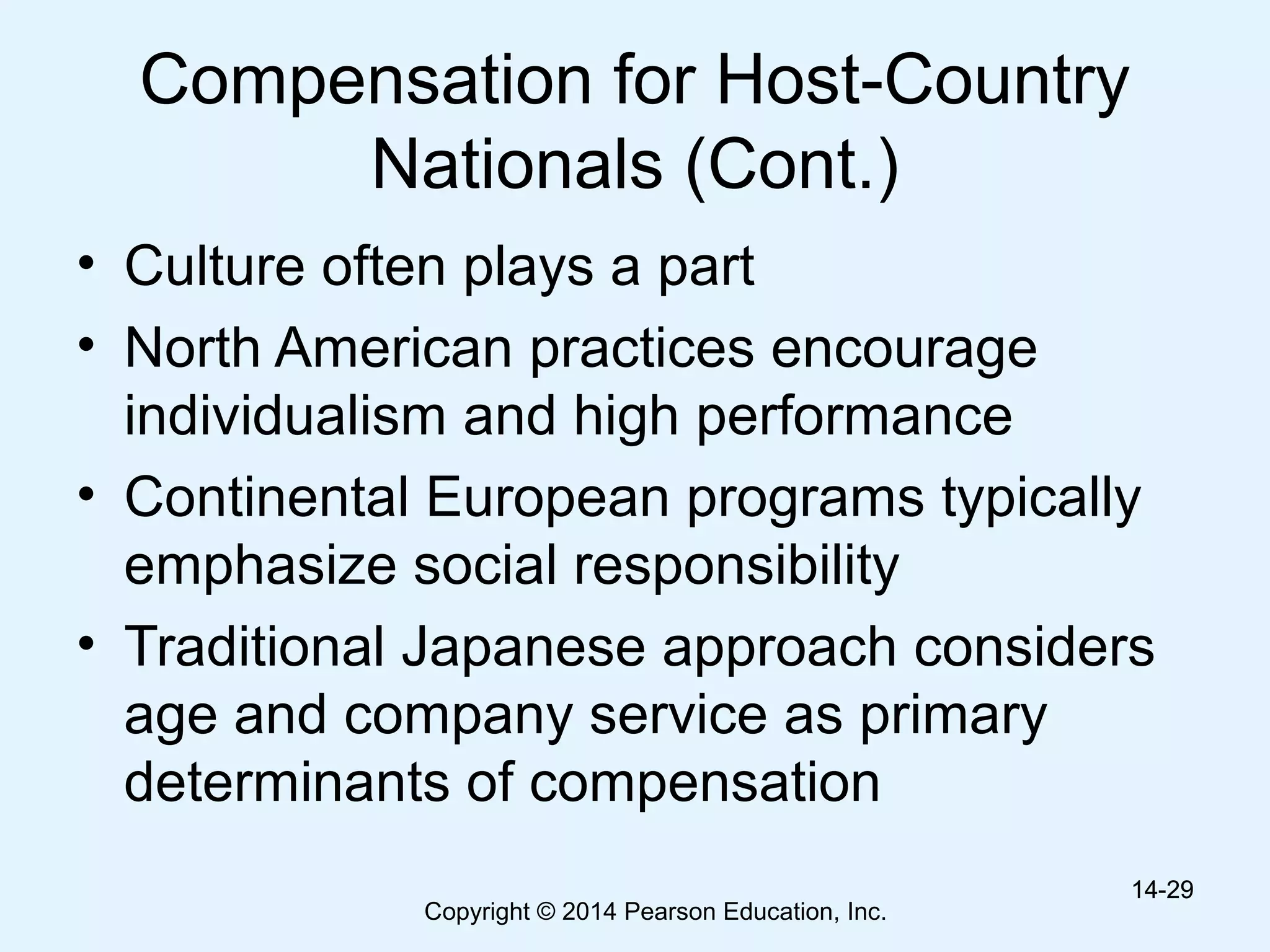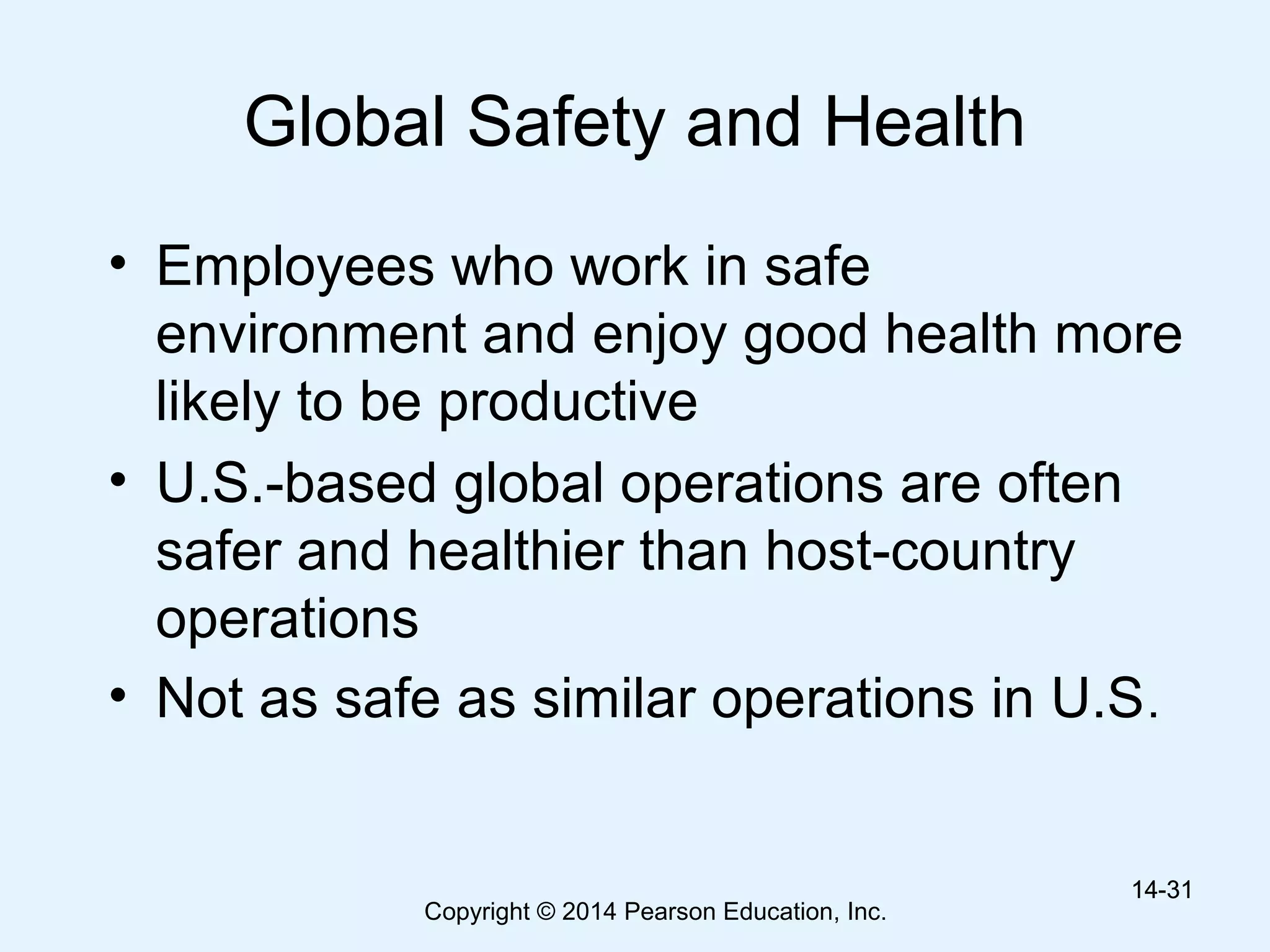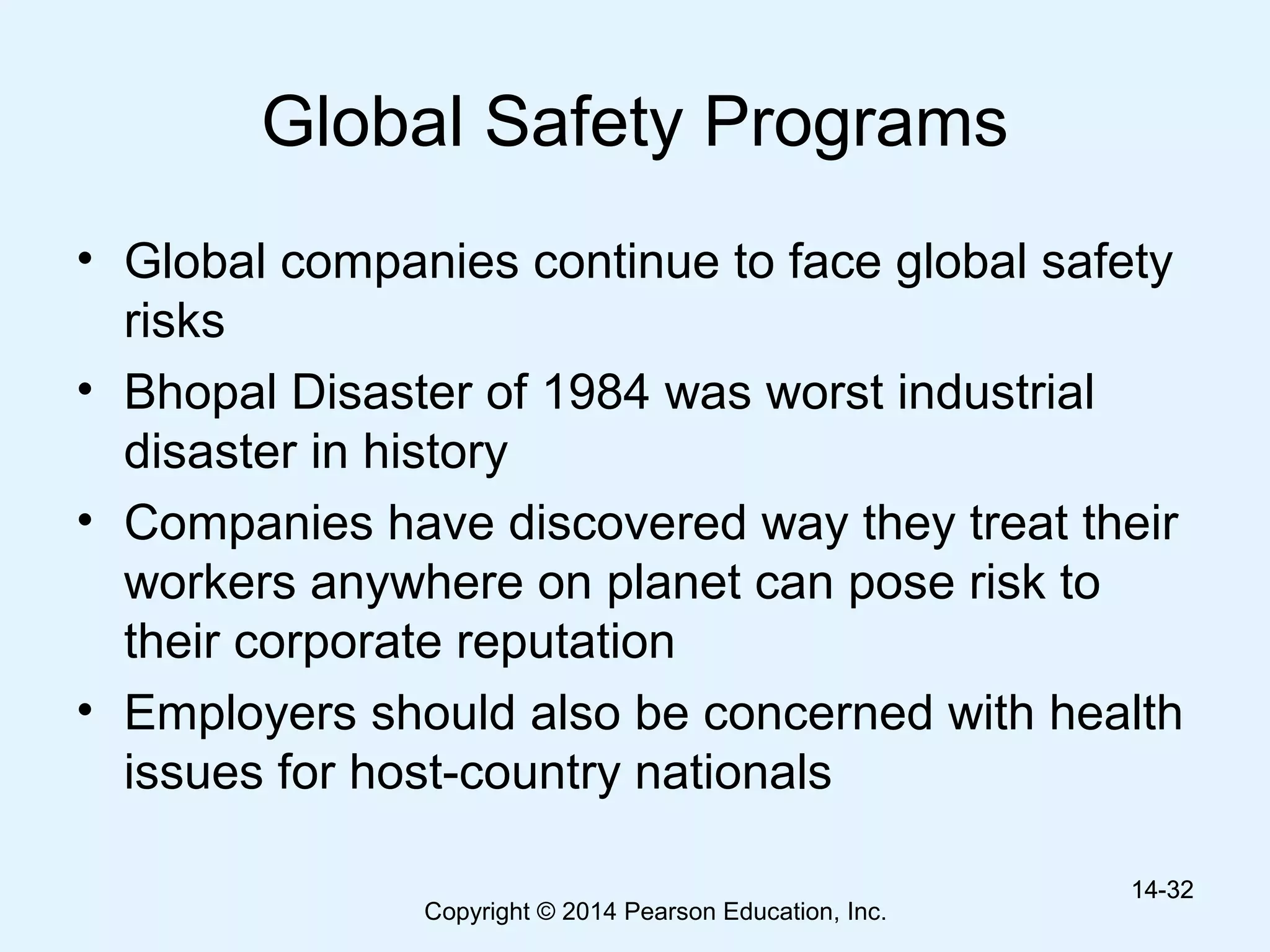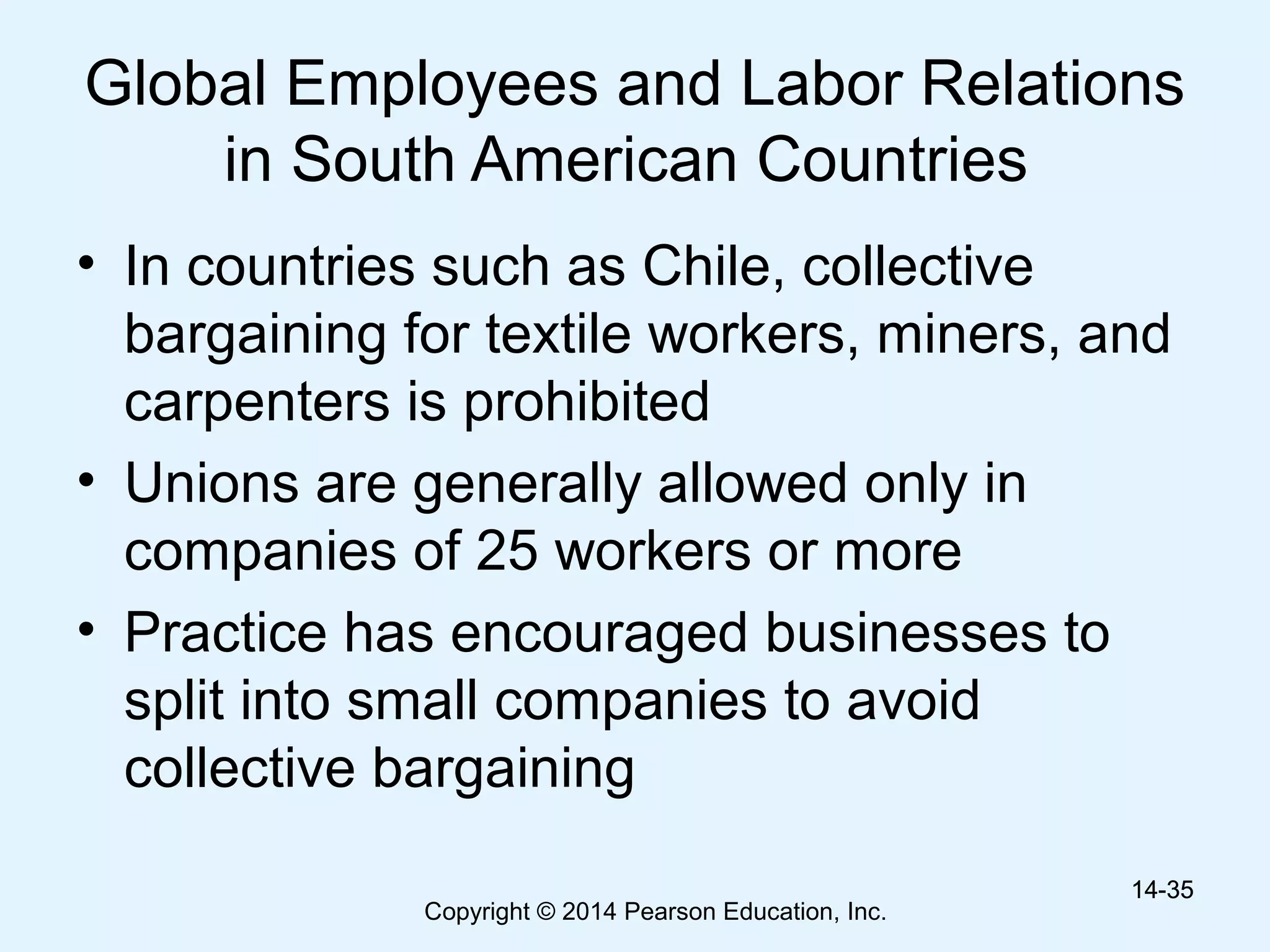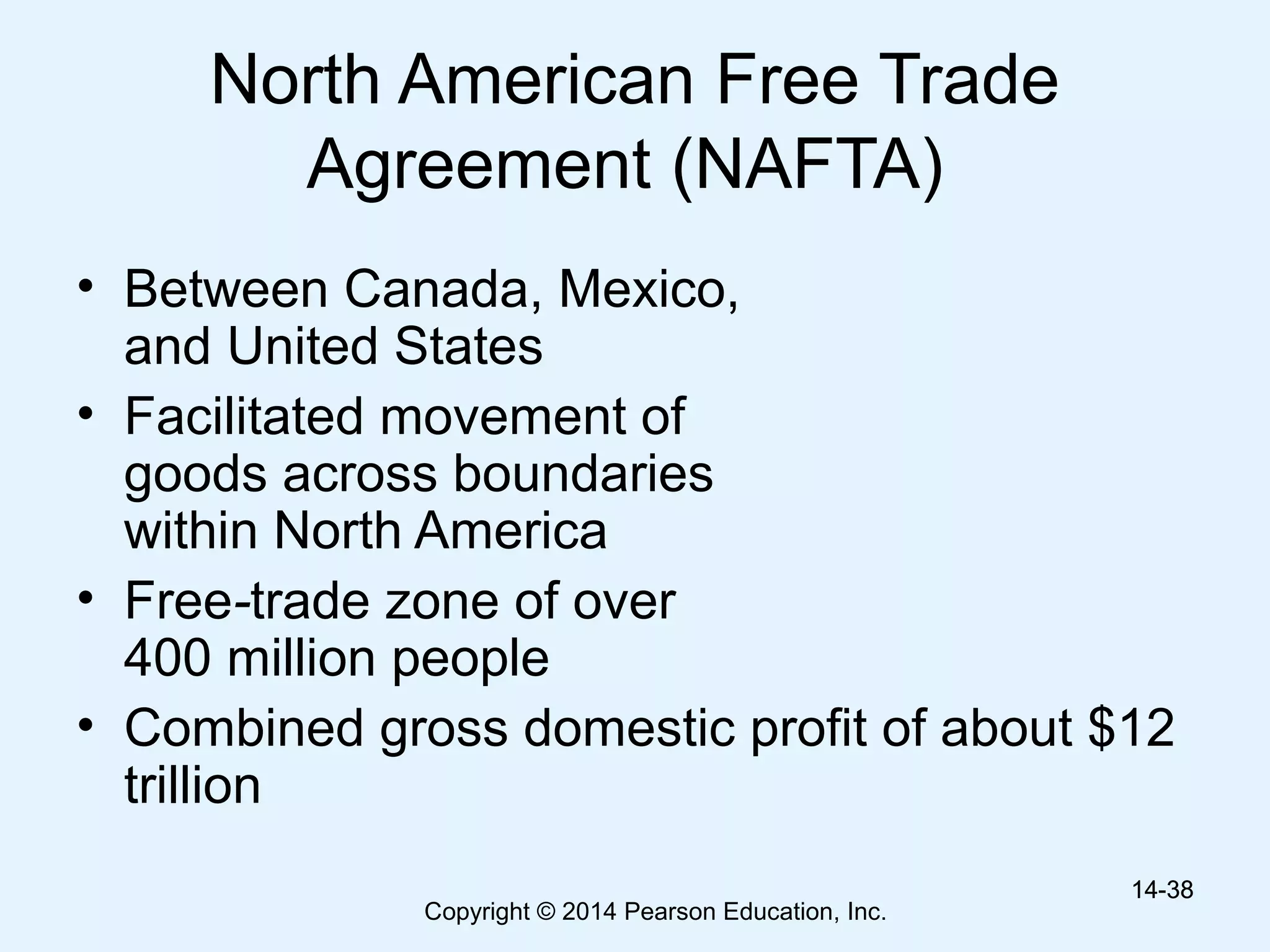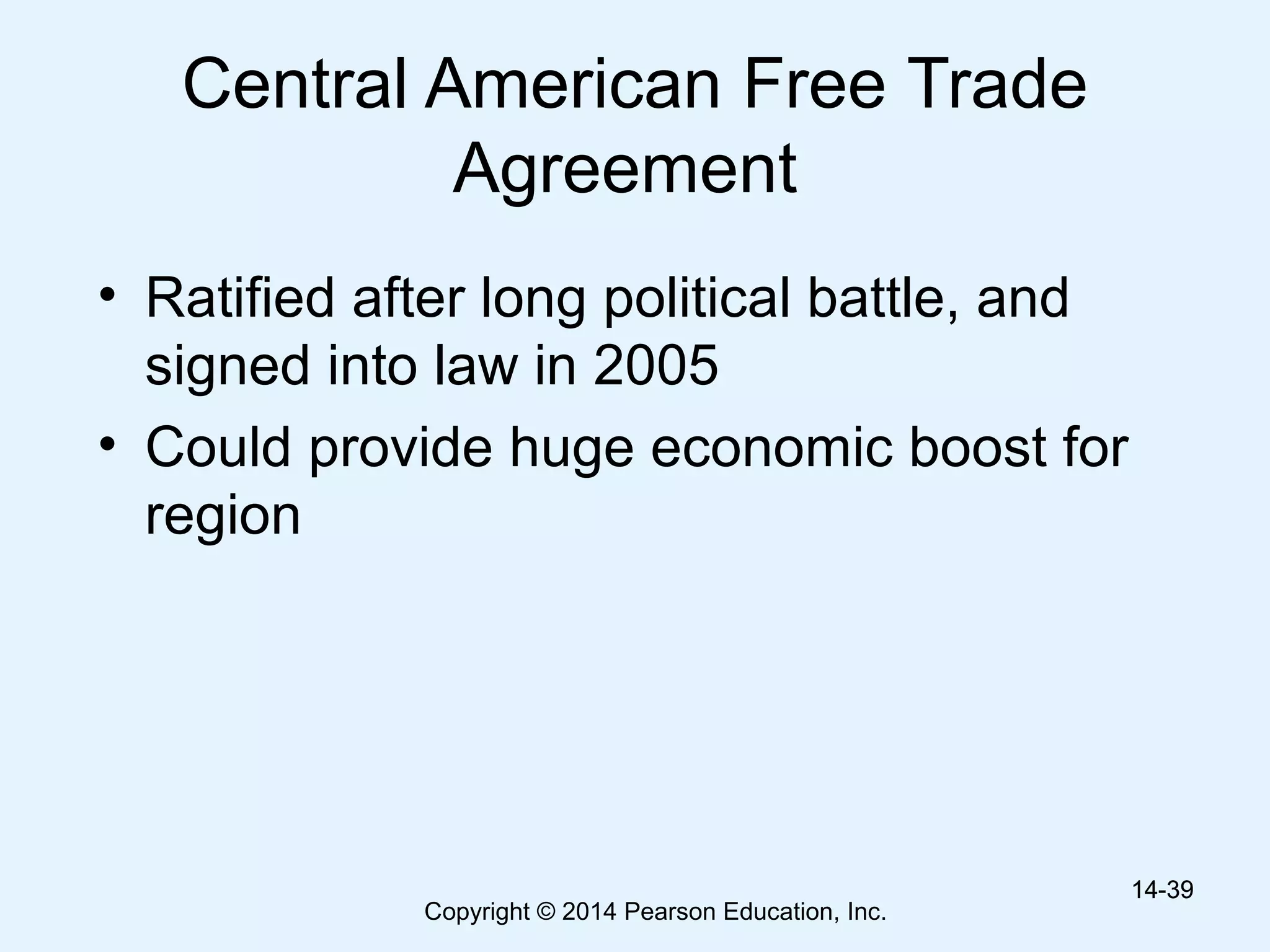This document provides an overview of global human resource management. It discusses topics such as the evolution of global business, global staffing approaches, compensation for expatriates and host country nationals, global human resource development, safety and health, and legal/political factors. The objectives are to describe the impact of globalization on HR and explain considerations related to areas like staffing, development, compensation and labor relations from a worldwide perspective.









